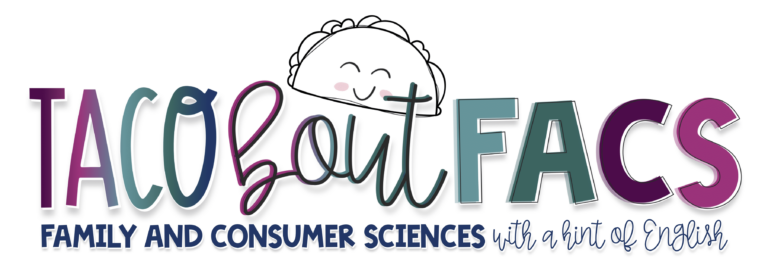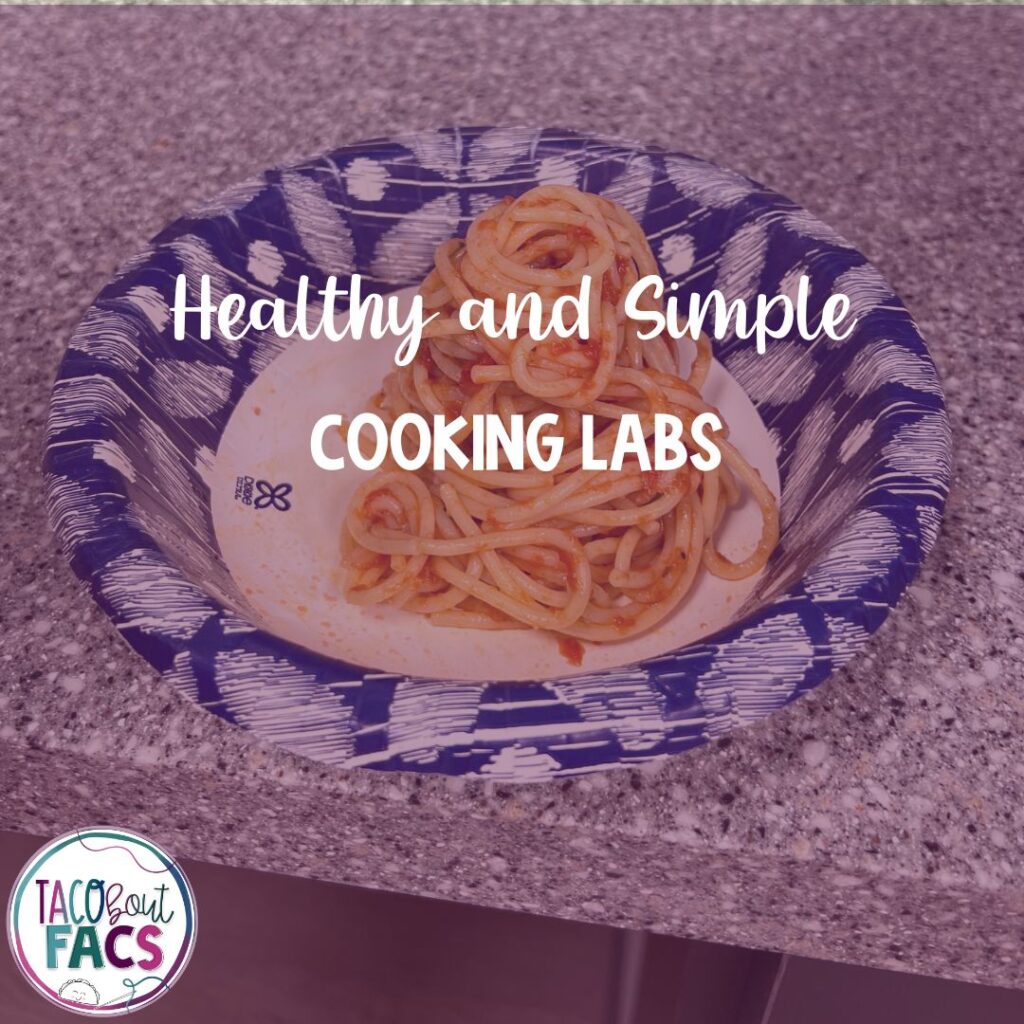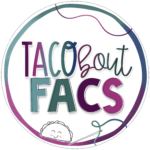Cooking Labs can be what sparks interest in a Family and Consumer Science elective. The food lab can be fun and exhausting. Messy and marvelous. Delicious and healthy.
Do you ever find yourself looking for recipes that are simple, quick, relatively inexpensive, enjoyed by most students, and healthy?
Some FACS classes have large budgets, some allow for student course fees to help cover costs. Some cook twice a week all semester and others have limited kitchens and equipment.
However, we all likely have a similar goal of creating healthy, simple, and quick recipes our students will enjoy.
Cooking Labs
I really believe “Food should look good. Food should taste good. Food should make you feel good.”

Don’t get me wrong, I love cookies – and we make them in the classroom. However, I also want to make sure I am choosing recipes that lead students to find ways to make healthy, filling, inexpensive meals they could cook for themselves and their families.
Our junior high and high school students are not far from turning into adults. A microwave mug cake is a fun lab, but that doesn’t sustain them in the long run.
My classes are 49-minutes with the occasional block scheduling in the spring for standardized testing. Some labs take up every minute of the class, but I think it is worth writing the occasional late pass for students to learn how to create healthy meals.
All labs in my classroom are on a 3-day model. You can read more about that system here.
Intro to FACS 1
In my FACS 1 class, an intro course for 7th and 8th graders, I try to make sure I am introducing students to the basics in all areas, but also enough kitchen experience that they are ready for complex labs.
My students make the same 6 labs. These are my tried and true recipes. They are relatively healthy, simple, and inexpensive.

The goal of these labs are to allow students to learn basic recipes, but still push them out of their comfort zone in some way.
Students create an omelet, zucchini pizza bites, fancy grilled cheese, pasta with homemade red sauce, walking tacos, and brown butter oatmeal chocolate chip cookies.
I also try to make sure to accommodate student food allergies for these recipes. It can cost a bit more, but it’s such a valuable learning opportunity for all students. You can read more about how students learn more about cooking with food allergies here.
Advanced foods course
We created an advanced FACS 2 course for 8th graders. This course builds on most of the FACS standards, but has a more complex and longer cooking unit than FACS 1.
I wrote a grant to get grills for this course. We have the grills stationed in the courtyard outside my classroom. My classroom already had a door the courtyard, which made this a perfect way to use the grills.
In this course, I try to find recipes that branch out student interests. I always encourage them to try a bite and most are surprised they do enjoy the lab.
Students have 9-10 labs including: Shakshuka, pancakes on the grill, fried rice on the grill, smash burgers with secret sauce, lettuce wraps, Charleston chewies, fancy ramen, broccoli cheddar soup or lime street corn white chicken soup, and a build your own team challenge.

Cooking lab choices
I continually add new recipes. Sometimes to try new ideas or to branch out of my comfort zone. I enjoy change and a good time challenge finish in time.
I do mix up the recipes for 2 reasons. I love change, but we allowed some students who asked to repeat the course during the spring semester. Rather than teaching the exact same course, I have tried to add new ideas and recipes as much as possible. I will likely continue mixing up my plans for FACS 1 and 2 in the future to help make it more enjoyable for me.


End of Labs Feedback
One way I have decided switching up labs was worth my time was allowing students to complete an “End of Labs Feedback” form. Sometimes you might get some obnoxious responses, but I would say the majority do provide meaningful feedback.
I switched out a second egg cooking lab for a pasta lab because of the feedback.
If you haven’t tried adding a feedback form into your classroom, I would highly recommend. You can access the free feedback form here.


